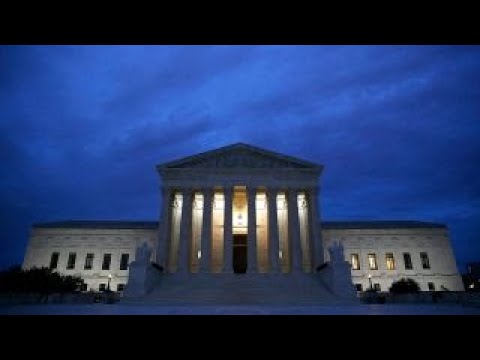JUSTICE MANUAL 9-113.000 – Forfeiture Settlements
9-113.100 – Forfeiture by Settlement and Plea Bargaining in Civil and Criminal Actions
Settlements to forfeit property are encouraged to conserve the resources of both the United States and claimants in situations where justice will be served. See Chapter 11 of the Asset Forfeiture Policy Manual. The following principles must be observed when negotiating and structuring settlements. The critical principle that must be applied to all settlements is that civil forfeiture, either judicial or administrative, should not be used to gain an advantage in a criminal case. Furthermore, all settlements must be in compliance with Attorney General Order No. 92-1598, Appendix to Subpart Y, Part 0, Title 28, Code of Federal Regulations (C.F.R.) establishing the settlement and compromise authority redelegated to the United States Attorneys from the Assistant Attorney General, Criminal Division, in accordance with the requirements of 28 C.F.R. § 0.168(d). Other general requirements applicable to all settlements are set out in JM 9-113.101 through 9-113.800.
For purposes of this chapter, the term settlement includes a plea agreement with the defendant in a criminal case in which there is an agreement regarding the forfeiture of property; the resolution of a third party claim in the ancillary proceeding in a criminal case; and the resolution of a claim filed by any claimant in a civil forfeiture case, either before or after the judicial complaint is filed.
9-113.101 – Statutory Basis Requirement for Forfeiture by Settlement and Plea Bargaining in Civil and Criminal Actions
There must be a statutory basis for the forfeiture of the property and sufficient facts stated in the settlement documents to satisfy the elements of the statute.
9-113.102 – Recovery of Investigative Costs
In general, the Government should not attempt to use a settlement to recover the costs of its investigation. It may be appropriate in unusual circumstances, however, to recover extraordinary expenditures, such as funds needed to clean up environmental damage to the forfeited property.
9-113.103 – Consultation with the Seizing Agency Requirement for Forfeiture by Settlement and Plea Bargaining in Civil and Criminal Actions
All settlements must be negotiated in consultation with the seizing agency and the U.S. Marshals Service. See Chapter 11 of the Asset Forfeiture Policy Manual.
It is the obligation of both the Assistant United States Attorney (AUSA) and the investigating agent before any type of settlement is discussed to determine what property, if any, is presently being processed for administrative forfeiture. Moreover, AUSAs may not reach agreements with defendants or their counsel about the return of property that is the subject of an administrative forfeiture proceeding without first consulting the seizing agency. Property that has been administratively forfeited belongs to the Government and, therefore, cannot be returned to a defendant or be used to pay restitution as part of a plea agreement, except through the restoration process outlined in Chapter 14 of the Asset Forfeiture Policy Manual.
Input from the USMS should be sought to determine current and prospective expenses to ensure that the settlement is fiscally sound from the Government’s perspective.
9-113.104 – Dispute Resolution in Consultations with the Seizing Agency Before Settlement or Plea Bargaining in Civil and Criminal Actions
When the seizing agency disagrees with the United States Attorney’s recommended settlement proposal, it must follow the procedures that are set forth in Attorney General Order 1598-92.
9-113.105 – Coordination of Forfeiture Settlements by United States Attorneys
A United States Attorney has the authority to settle those judicial forfeiture actions involving property located in his or her judicial district. In addition to complying with Department rules and regulations governing the settlement of cases, to settle forfeiture actions involving property located in another judicial district, the United States Attorney handling the forfeiture must notify and coordinate with the United States Attorney in the district where the property is located. It is the responsibility of the United States Attorney in the district that forfeits real property located in another district to comply with the requirements for forfeiture in the district where the property is located. Failure to comply with such requirements may result in a cloud on the government’s title; coordination will minimize this possibility.
9-113.106 – Settlement of Forfeiture in Conjunction with Plea Bargaining
The government may conclude a civil forfeiture action in conjunction with the criminal charges against the defendant which provided the cause of action against the property. The government must not agree, however, to release property subject to forfeiture (civil or criminal) in order to coerce a guilty plea on the substantive charges, nor may the government agree to dismiss criminal charges in order to coerce a forfeiture settlement. If a plea agreement is not to conclude the civil forfeiture case, language to that effect should also be stated in the plea agreement. Failure to specify in this manner could be fatal to the concurrent civil forfeiture action. Further specific principles governing “global” settlements are as follows:
In all cases, agreements must be based upon facts which support forfeiture. The Department does not release property which is otherwise subject to forfeiture to encourage guilty pleas; nor does it permit defendants to submit property which is otherwise not subject to forfeiture in order to lighten the potential incarceration component of the punishment.
To the maximum extent possible, the criminal plea and forfeiture should conclude the defendant’s business with the government. Delaying forfeiture considerations until after the conclusion of the criminal case unnecessarily extends the government’s involvement with the defendant and diminishes its effectiveness.
Where the claimant/defendant has negotiated a plea agreement and concurrently wishes to forfeit the property subject to a civil forfeiture action, the plea agreement should state that the defendant has waived any and all rights–constitutional, statutory, or otherwise. Any civil settlement should be documented independently of the plea agreement and should include the following information: the claimant/defendant’s interest in the property; admission of the facts supporting forfeiture; the claimant/defendant gives up all rights to the property; he/she gives up any right to contest the forfeiture; and settlement should be supported by written agreement.
Furthermore, the defendant, in the plea agreement, must admit to facts sufficient to support the forfeiture. The government, however, should not waive its right to reopen a civil forfeiture action where it is later determined that the settlement was based on false information or where the defendant violates his plea agreement.
9-113.107 – Forfeiture Settlements Involving Installment Payments
Settlements shall not provide for installment payments over time, except upon the advice and approval of the Money Laundering and Asset Recovery Section (MLARS), Criminal Division, in consultation with the U.S. Marshals Service, Headquarters Seized Assets Division. In Department of the Treasury and Homeland Security cases also, the advice and approval of MLARS, Criminal Division, should be sought.
9-113.108 – Reacquisition of Forfeited Property
The settlement should state that the claimant/defendant may not reacquire the forfeited property directly or indirectly through family members or others acting in concert with him or her. Family members who already own a partial interest in the forfeited property may, however, purchase the forfeited interest. See Chapter 11.B.8 of the Asset Forfeiture Policy Manual (“Reacquiring the property”).
9-113.109 – Tax Obligations, Fines, Penalties, and Other Monetary Obligations in Forfeiture Settlements
The terms of the settlement, unless specified, do not affect the tax obligations, fines, penalties, or any other monetary obligations of the claimant/defendant owed to the government. The civil settlement documents should state this clearly. See Chapter 11.B.9 of the Asset Forfeiture Policy Manual (“Effect on taxes and other obligations”).
9-113.200 – Monetary Amounts of Forfeiture Settlement Authority
United States Attorneys have authority to settle civil and criminal forfeiture cases as follows:
any case in which the amount involved does not exceed $1,000,000, regardless of the portion of the property that would be released as a result of the settlement; and
any case in which the amount involved exceeds $1,000,000 but does not exceed $5 million, if the amount to be released does not exceed 15 percent of the amount involved.
In all other cases, the United States Attorney must obtain approval of the settlement by the Money Laundering and Asset Recovery Section (MLARS). The chief of MLARS has the authority to approve any settlement required to be submitted for approval, unless the amount to be released exceeds 15 percent of the amount involved and is more than $2 million; in such cases, the settlement must be approved by the Deputy Attorney General. See 28 C.F.R. §§ 0.160, 0.161; Attorney General Order No. 1598-92. See Chapter 11 of the Asset Forfeiture Policy Manual (“Settlement Approval Authorities”).
9-113.300 – Effecting Settlement Agreements Through Administrative Forfeiture
The following procedures apply to settlement agreements in civil judicial forfeiture cases and to criminal forfeiture plea agreements where an administrative forfeiture is necessary to effectuate the agreement. In such cases, the headquarters of the seizing agency involved must be consulted by the United States Attorney’s Office prior to finalizing an agreement in order to ensure the agency can accommodate the terms of the agreement. The Department’s policy is to pursue an agreed upon administrative forfeiture where it is possible and economically efficient to do so. See Chapter 11 of the Asset Forfeiture Policy Manual (“Using Administrative Forfeiture to Achieve a Settlement”).
9-113.310 – Use of Administrative Forfeiture in Settlement of Civil Judicial Forfeitures Stemming From Administrative Actions
The following requirements must be met where a claim has been filed and the case has been referred to the United States Attorney but a settlement is reached before a civil judicial complaint has been filed.
The terms of the settlement should be reduced to writing by the United States Attorney and include:
A provision whereby the claimant/defendant identifies his or her ownership interest in the property to be forfeited;
A provision whereby the claimant/defendant gives up all right, title, and interest in the property;
A provision whereby the claimant/defendant agrees not to contest the government’s administrative forfeiture action and waives all deadlines under 18 U.S.C. § 983(a);
A provision whereby the claimant/defendant agrees and states that the property to be forfeited administratively was connected to the illegal activity as proscribed by the applicable civil forfeiture statute (e.g., money to be forfeited is in fact proceeds from illegal drug trafficking);
Specific reference to the withdrawal of the claim; and
A “hold harmless” provision and a general waiver of Federal Tort Claims Act rights and Bivens actions, as well as a waiver of all constitutional and statutory defenses and claims.
The case should be referred promptly back to the seizing agency to reinstitute the administrative process. The seizing agency shall reinstitute the administrative forfeiture process to effectuate the agreement upon receipt of a referral in compliance with this policy, consistent with its lawful authority.
Where the agreement provides for the claimant to withdraw the claim to all property subject to forfeiture, the entire case will be referred back to the agency for administrative forfeiture.
Where the agreement provides for the claimant to withdraw only a part of a claim, the case will be referred back to the agency for administrative forfeiture of that portion of the forfeitable property named in the agreement, and the agency may release the remainder to the claimant consistent with the settlement.
Re-publication of the notice or of the administrative forfeiture action is not necessary, provided publication covering the property to be forfeited occurred prior to the filing of the claim. See Chapter 11 of the Asset Forfeiture Policy Manual (“Settlement of Forfeiture as an Administrative Forfeiture After a Claim is Filed in an Administrative Forfeiture Proceeding, But Before a Judicial Complaint is Filed”) and JM 9-113.400.
9-113.320 – Use of Administrative Forfeiture in Settlement of Civil Judicial Forfeitures not Stemming from Prior Administrative Actions
In cases where the judicial action was commenced without a prior administrative forfeiture action having begun and a settlement agreement has been reached involving a proposed administrative forfeiture of seized property:
the headquarters of the seizing agency must concur in that part of the settlement that would obligate the agency to commence administrative forfeiture proceedings;
the complaint must be dismissed; and
the jurisdiction of the district court must be relinquished before referral may be made to a seizing agency under this policy.
The seizing agency shall initiate the administrative forfeiture process to effectuate such an agreement upon receipt of a referral in compliance with this policy, consistent with its lawful authority. See Chapter 11 of the Asset Forfeiture Policy Manual (“Using administrative forfeiture proceeding to settle civil forfeiture case where no prior administrative forfeiture proceeding has commenced”).
9-113.330 – Use of Administrative Forfeiture in Settlement of Criminal Forfeitures.
In those cases where property has been seized or restrained for forfeiture under criminal statutes and an agreement reached between the United States Attorney and the claimant/defendant prior to an order of forfeiture relating to a proposed administrative forfeiture of the property:
the headquarters of the seizing agency must concur in that part of the settlement that would obligate the agency to commence administrative forfeiture proceedings;
the seizure or restraining orders must be dismissed; and
the jurisdiction of the district court over the property must be relinquished. The provisions of JM 9-113.310 must be met before referral may be made to a seizing agency under this policy. The seizing agency shall initiate the administrative forfeiture process to effectuate such an agreement upon receipt of a referral in compliance with this policy, consistent with its lawful authority.
See Chapter 11 of the Asset Forfeiture Policy Manual (“Using Administrative Forfeiture To Settle a Criminal Forfeiture Action”).
9-113.400 – Judicial Forfeiture Settlements and Petitions for Remission or Mitigation
No agreement, whether a settlement in civil judicial action or a plea agreement resolving both criminal charges and the forfeiture of assets, may contain any provision binding the Department and the agencies to a particular decision on a petition for remission or mitigation, or otherwise contain terms whose effectiveness is contingent upon such a decision. The remission and mitigation process, like the pardon process in criminal cases, is completely independent of the litigation and case settlement process.
MLARS, however, in appropriate cases upon request, will adjudicate a properly filed petition for remission or mitigation prior to the negotiation of a forfeiture settlement or entry of a final order of forfeiture. It is proper to include in a settlement agreement a provision that expressly leaves open or expressly forecloses the right of any party to file a petition for remission or mitigation. The settlement document must comply with the provisions of JM 9-113.310. See Chapter 11 of the Asset Forfeiture Policy Manual (“References to the Remission or Restoration in Settlements”).
9-113.410 – Civil Judicial Forfeiture Settlement Procedures
Any settlement that purports to “forfeit” property binds only the parties to it and forfeits only that interest in the property that the claimant possesses. The following procedures must be followed to ensure that a valid and complete civil judicial forfeiture by settlement occurs:
A civil verified complaint for forfeiture of the property must be filed in the U.S. District Court to establish the court’s jurisdiction. Filing an action as a “Miscellaneous Docket” and other attempts to short-cut the process will not be recognized as a valid forfeiture.
All known parties in interest must be given written notice, and notice by publication must be made.
If no timely claim has been filed pursuant to the Supplemental Rules for Admiralty or Maritime Claims and Asset Forfeiture Actions, a default judgment must be sought, pursuant to Federal Rule of Civil Procedure 55, against known interested parties and unknown parties who were notified by publication.
Proposed orders of forfeiture must be filed with the settlement agreement and include the terms of the settlement agreement. See Chapter 11 of the Asset Forfeiture Policy Manual (“Settlements in Civil Judicial Forfeiture Cases”).
9-113.420 – Criminal Forfeiture Settlement Procedures
In any plea agreement, a defendant may only consent to the forfeiture of his or her interest in the property. Forfeiture of the defendant’s interest in property held by nominees can proceed criminally, but the potential for an ancillary claim by the nominee must be anticipated. A settlement that purports to forfeit the property may only bind the parties to it and transfers only that interest which the claimant/defendant possesses.
The following procedures must be followed to ensure that a valid forfeiture results from a plea settlement:
There must be a forfeiture count or allegation in the indictment or information, otherwise forfeiture is legally impossible. To the extent property is known to be subject to forfeiture, it should be listed in the indictment, information, or in a subsequent Bill of Particulars. The United States Attorney’s Office must ensure that its criminal pleadings are in compliance with Rule 32.2 of the Federal Rules of Criminal Procedure.
The United States Attorney must comply with the requirements applicable to third party interests (e.g., 21 U.S.C. § 853(n)(1)-(7)), including notice of the forfeiture and the right of third parties to obtain an adjudication of their interests in the property.
The settlement to forfeit property must be in writing, and the defendant must concede facts supporting the forfeiture.
The court must issue a Final Order of Forfeiture that incorporates the settlement and must include the forfeiture order in the judgment at sentencing.
Wherever possible, in order to avoid protracted litigation of ownership issues in the context of ancillary hearings, the United States should agree to accept unencumbered property only, with the exception of valid financial institution liens, or at the very least, the plea agreement should require the defendant to convey clear title to the government. See JM 9-113.107 (Forfeiture Settlements Involving Partial Payments). See also Chapter 11 of the Asset Forfeiture Policy Manual (“Plea Agreements Incorporating Criminal Forfeiture”).
9-113.500 – Acceptance of a Monetary Amount in Lieu of Forfeiture
When it is in the interests of justice, and subject to the limitations set forth below, which have been imposed as a matter of policy rather than statutory requirement, the Government may accept and forfeit an agreed amount of money in lieu of seized forfeitable property. In a judicial forfeiture case, with court approval, the Government may also accept and forfeit an agreed amount of money in lieu of forfeitable property, including real estate, that has not been seized.
The following procedures must be followed when the Government accepts and forfeits money in lieu of other property:
Administrative forfeitures. 19 U.S.C. § 1613(c), as incorporated by, e.g., 18 U.S.C. § 981(d), 21 U.S.C. §§ 853(j), 881(d), permits federal seizing agencies, as a form of relief from administrative forfeiture, to accept and forfeit a sum of money in lieu of forfeitable seized property. See also 19 U.S.C. § 1614. As a matter of policy and discretion, however, DEA and FBI limit their use of this authority to cases where such substitution is determined to be in the interests of justice and a timely claim for the forfeitable property has been filed pursuant to 18 U.S.C. § 983(a)(2) and referred by the seizing agency to the U.S. Attorney’s Office for initiation of judicial forfeiture proceedings. After consultation with the seizing agency, the U.S. Attorney’s Office may accept a monetary amount in lieu of forfeiture of the seized property and refer the matter back to the seizing agency to effect the settlement.
Judicial forfeitures. After commencing a judicial forfeiture case, with court approval, and pursuant to an appropriate order of forfeiture, the Government may accept and forfeit an agreed sum of money in lieu of forfeitable property.
The Government must transfer money received in lieu of forfeiture to the U.S. Marshal’s Service district office or the appropriate Treasury agency in place of the asset being released.
Pursuant to the order of forfeiture, the U.S. Marshal’s Service or the appropriate Treasury agency must deposit the forfeited money (and share it when appropriate) in the same manner as applies to other forfeited property.
In cases where the Postal Inspection Service or the National Marine Fisheries Service is the primary federal investigative agency, the U.S. Marshals Service must deposit the money, deduct expenses (if any) incurred with respect to the property being returned, deduct the approved equitable shares attributable to other federal agencies participating in the Department of Justice Assets Forfeiture Fund, and transfer the balance by refund to the above services, as appropriate. Each service will be responsible for sharing with participating state and local agencies in these cases.
For additional information on this topic see Chapter 11 of the Asset Forfeiture Policy Manual (“Cash in Lieu of Forfeiture of Other Property”).
9-113.600 – Agreements to Exempt Attorneys’ Fees from Forfeiture
Any agreement to exempt an asset from forfeiture so that it can be transferred to an attorney as fees must be approved by the Assistant Attorney General for the Criminal Division. See JM 9-119.010 and JM Chapter 9-120.000. See also Chapter 11 of the Asset Forfeiture Policy Manual (“Agreements to Exempt Attorneys’ Fees from Forfeiture and Payment of Equal Access to Justice Act (EAJA) Fees”).
9-113.700 – Settlement with Fugitives in Civil Forfeiture Cases
Prosecutors should first consult with the MLARS, Criminal Division, before engaging in settlement negotiations in civil forfeiture cases where the claimants are fugitives in United States criminal proceedings.
9-113.800 – Expedited Payment of Lienholders in Forfeiture Cases
The former Executive Office for Asset Forfeiture interpreted 28 U.S.C. § 524(c) as authorizing pre-forfeiture payment of liens and mortgages. Use of this authority must be approved in writing by MLARS prior to entering into any agreement to pay a lienholder. It is intended that this authority be used sparingly and only in those situations where pre-forfeiture payment of liens and mortgages is necessary to avoid extreme hardship to natural persons. All other viable options, including interlocutory sales, must be pursued prior to seeking this authority.


![gerado-serrano-tx-eagle-pass-DRW_5061-scaled[1]](https://rucci.law/wp-content/uploads/2023/12/gerado-serrano-tx-eagle-pass-DRW_5061-scaled1.jpg)




![GettyImages-172327317[1]](https://rucci.law/wp-content/uploads/2023/12/GettyImages-1723273171.jpg)
![ICEpolice-2-1250×650[1]](https://rucci.law/wp-content/uploads/2023/12/ICEpolice-2-1250x6501-1.jpg)


